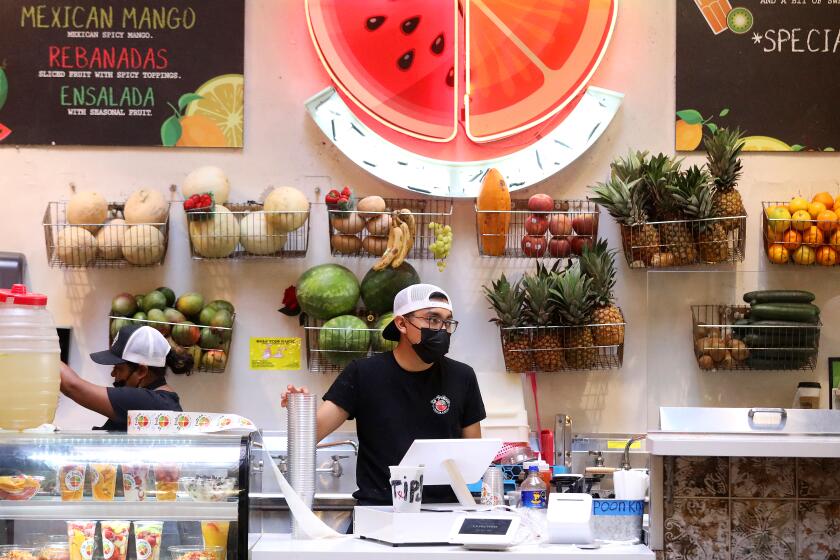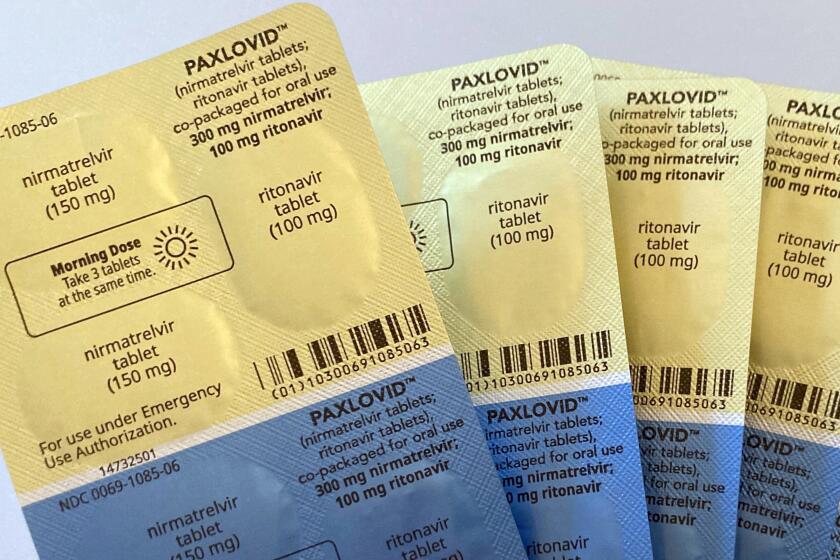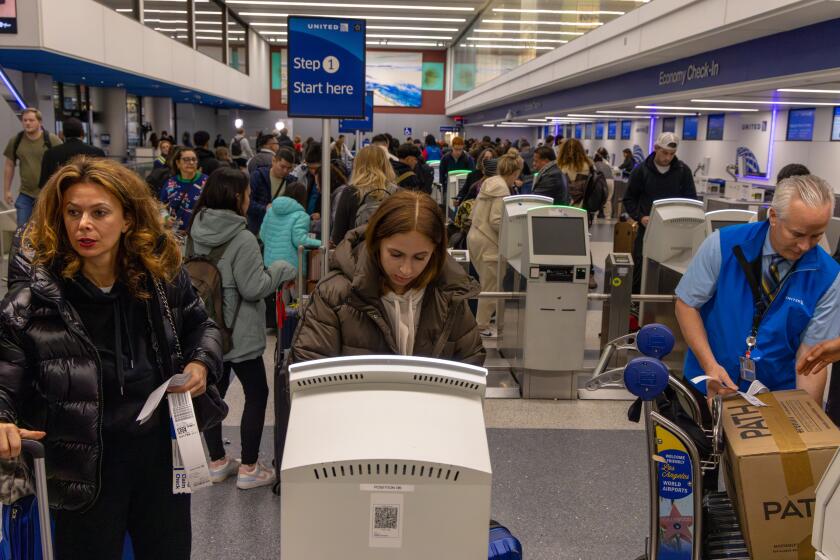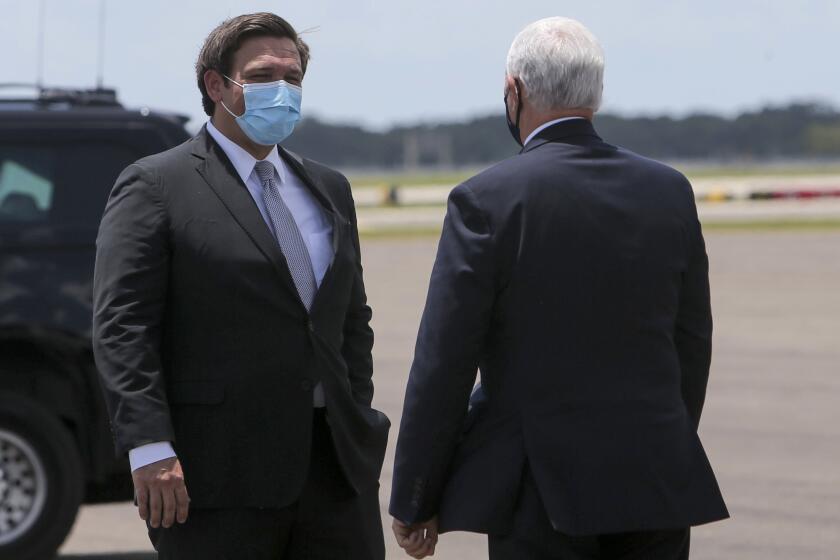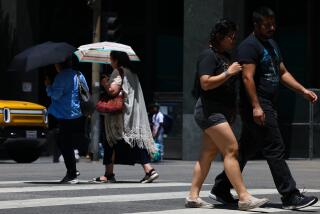Has California’s COVID-19 winter surge peaked? Here’s what the data show
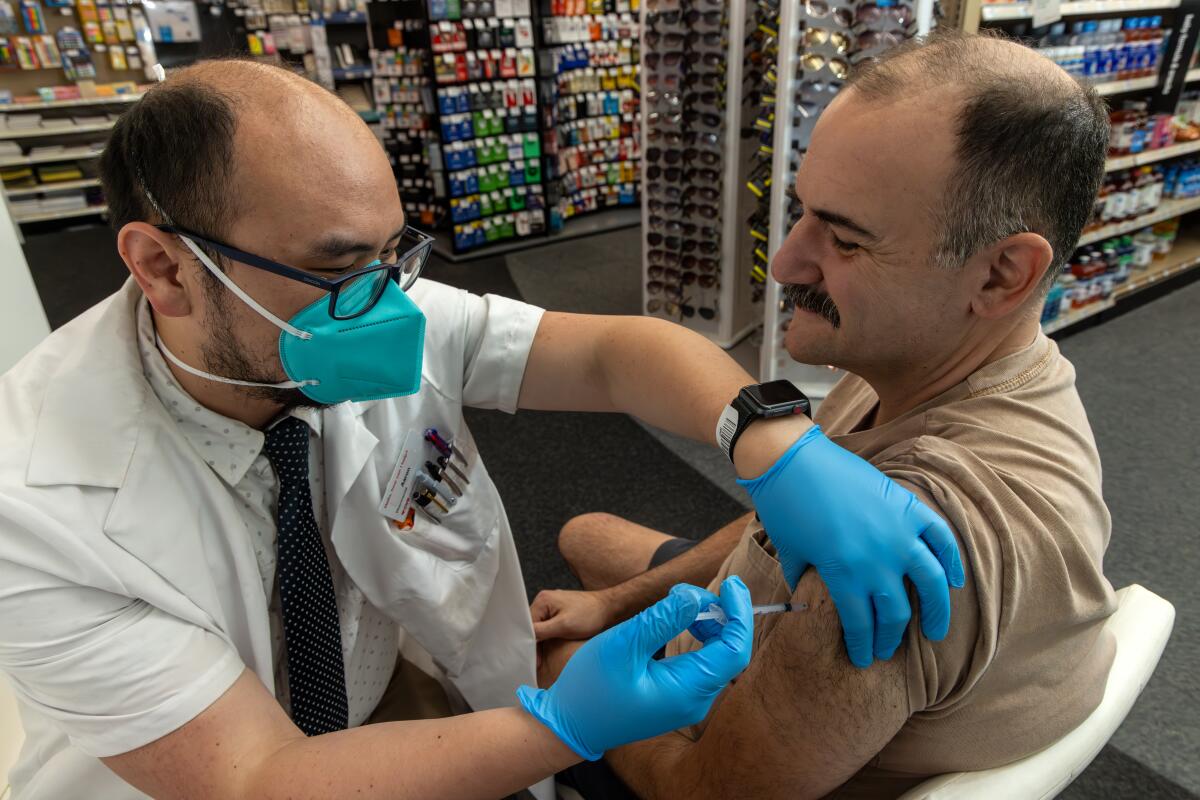
- Share via
The winter respiratory virus season may have hit its peak in California, with coronavirus levels in sewage and COVID-19 hospitalizations starting to decline following weeks of steady increases.
Should the trend continue, 2023–24 would be the mildest winter of the COVID era in terms of severe illness — free of anything even approximating the devastating and disruptive surges seen in prior years.
While there’s been real progress in curbing coronavirus-positive hospitalizations, there are still significant numbers of people getting sick. And despite improvement in patient outcomes — thanks to the rollout of vaccines and therapeutics — COVID-19 still causes more deaths and new respiratory hospitalizations than the flu.
Despite recent declines, COVID disease levels remain elevated compared to pre-winter, and health officials say it’s important that residents — especially those who are older — continue to take steps to protect themselves.
“Your next COVID-19 infection could be your worst, so don’t gamble with your health,” the Centers for Disease Control and Prevention wrote in a social media post. “Vaccination reduces risks and severity and keeps you protected.”
California now says people with COVID can leave home earlier than before, if their symptoms are mild and improving. But they need to mask up, or risk infecting others.
For the week ending Feb. 3, the most recent for which data are available, there were 2,281 new coronavirus-positive hospitalizations in California, down 14% from the prior week, according to the CDC. The apparent seasonal high was 3,746 new hospitalizations for the week that ended Dec. 30.
Last winter’s peak for hospitalizations came the last week of 2022, when 5,260 coronavirus-positive patients were admitted.
Decreasing COVID-19 hospitalizations prompted Los Angeles County health officials last week to lift an order issued just after Christmas that required healthcare employees and visitors to wear masks at hospitals and other facilities that provide in-patient care.
However, personnel in licensed healthcare facilities who haven’t been vaccinated against COVID-19 and flu since the autumn must still mask up while working in patient-care areas. This health order lasts until April 30, the end of the respiratory virus season.
In L.A. County, levels of coronavirus detected through wastewater surveillance — which the county uses as a baseline to assess COVID activity — have dipped. For the week ending Jan. 27, the most recent data available, viral wastewater concentrations were at 36% of the peak recorded last winter. That measurement improved substantially from the prior week, which was 64% of last winter’s peak. The reading the week before that — 67% — was the highest this season.
The delay in accurate test results is probably a result of people having accumulated immunity from COVID-19 over the years, whether from vaccinations or previous infections.
In the largest sewershed of Santa Clara County, Northern California’s most populous, coronavirus levels are also declining. Viral levels there appeared to peak in mid-January at close to the all-time high seen during the first Omicron wave two winters ago.
For the most recent reading, dated Tuesday, coronavirus levels in the San José sewershed fell to 49% of the peak from two winters ago. That concentration is still considered high.
In L.A. County, flu and respiratory syncytial virus, or RSV — the other two prongs of the “tripledemic” that stressed California hospitals last winter — are still circulating at elevated levels but have declined from their seasonal peak, public health officials said.
Health officials are continuing to urge people to get an updated COVID-19 vaccination if they haven’t since a new version became available in September. Only 33% of California seniors 65 and older have received the latest shots.
The best vaccination rates for seniors in California are in the San Francisco Bay Area, where 52% of older Sonoma County residents and 56% of those in Marin County have received the most recent COVID-19 vaccine.
“Get the updated dose that was formulated to offer better protection against new strains of the virus,” the L.A. County Department of Public Health said in a statement. “The new vaccine can also restore immunity that may have diminished over time and lessen the risk of getting long COVID.”
Those who test positive need to isolate and stay home only while they have symptoms. Those who test positive, but remain asymptomatic, do not need to do so.
A study published this month by the CDC found that for adults who got an updated vaccine since September, there was 54% increased protection against symptomatic COVID-19 compared with those who did not.
Another study, published in January by the CDC, found that seniors 65 and older who received last winter’s COVID-19 vaccination were about 50% less likely to have a COVID-related stroke, heart attack or blood clot. A similar finding was made for adults receiving dialysis who also got that vaccination.
Getting COVID-19 has been associated with increased risk of stroke, heart attack and blood clots.
Anti-COVID therapeutic drugs are widely available, but some public health officials acknowledge that many still run into barriers trying to get a prescription.
Even with recent improvements in key COVID metrics, officials and experts say it’s vital that residents take steps to protect themselves — and if infected, to lessen the chance they spread the virus.
People who get COVID-19 and have symptoms should stay home until their symptoms are mild and improving and they haven’t had a fever for 24 hours without medication, California health officials say.
Anyone with a coronavirus infection, whether they have symptoms or not, needs to mask up around others for 10 days after they become sick or first test positive. Failing to do so risks spreading infection. People can remove their masks earlier if they have two consecutive negative rapid test results, taken at least one day apart, according to state and L.A. County guidance.
L.A. County health officials go a step further than the state and recommend waiting for a negative rapid test before leaving home in the 10-day window after symptoms appear or someone first tests positive. A negative rapid test result is not needed after that period.
Medicines such as Paxlovid were hailed as an important way to help reduce the risk of severe illness or death from COVID-19. A new study explores why many vulnerable patients didn’t get them.
Santa Clara County health officials also cautioned residents about the risks should residents end isolation before 10 days.
“The best scientific information still indicates that individuals with COVID-19 may be infectious for around 10 days after they become sick or test positive,” the county Public Health Department said. “Given this ongoing risk of COVID-19 transmission, in instances where the benefits outweigh the harms, individuals may consider using additional layers of protection when feasible, such as maximizing indoor ventilation and filtration, working remotely and avoiding large indoor gatherings.”
Those who seem to have recovered, but then see their symptoms return or worsen — a phenomenon known as “COVID rebound” — should take another rapid test. If that comes back positive, the isolation window resets.
California health officials also recommend people who test positive for the coronavirus avoid contact with seniors and anyone else at high risk for severe COVID-19 for at least 10 days.
Coronavirus transmission is once again spiking in California entering the winter holiday season — and the new JN.1 subvariant may be partly to blame.
The CDC’s COVID guidelines differ somewhat from the state’s. The federal agency recommends that people who test positive stay home for at least five days after they become sick — or, if they’re asymptomatic, for at least five days after their first positive test.
The CDC says people may end isolation after Day 5 if their symptoms are improving and they’ve been fever-free for 24 hours. Those with moderate illness — who experienced symptoms such as difficulty breathing — need to isolate through Day 10.
Infected people should wear masks around other people through Day 10. They may remove them earlier if they get two rapid-result negative tests two days apart. But if they continue to test positive, they may still be infectious, and the CDC says they should continue masking until they get two consecutive negative test results at least two days apart. “This may mean you need to continue wearing a mask and testing beyond Day 10,” the agency says.
If possible, coronavirus-positive people should stay in a separate room, away from family members and roommates who are not infected. Ways to reduce infection among household members include bringing fresh air in by opening the windows, using fans to blow out air and using air purifiers. Infected people should use a separate bathroom, but if there’s only one, touched surfaces should be cleaned and disinfected after every use.
Ron DeSantis cited a scientific journal as evidence Florida had a lower COVID death rate than California. The study’s author says that’s not the whole story.
Amid reports that people with COVID-19 are having a hard time or getting charged high prices to get Paxlovid, an antiviral pill that can reduce the severity of COVID-19 illness, health officials say there are a number of ways to access the medicine at a lower cost or for free. But it’s important to get tested and seek care promptly, as the medication should be started within five days of the onset of symptoms.
Los Angeles County residents can call the county’s public health info line, (833) 540-0473, between 8 a.m. and 8 p.m., seven days a week, to discuss free treatment options with a health provider. The county may be able to send medication to residents for free.
Californians who don’t have insurance or have a hard time getting anti-COVID-19 medication can schedule a free telehealth appointment by calling (833) 686-5051 or visiting sesamecare.com/covidca. Medication costs may be subject to a copay, depending on your insurance.
A program funded by the National Institutes of Health, featured at test2treat.org, gives adults who test positive for COVID-19 or flu free access to telehealth care and treatment.
More to Read
Sign up for Essential California
The most important California stories and recommendations in your inbox every morning.
You may occasionally receive promotional content from the Los Angeles Times.


